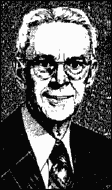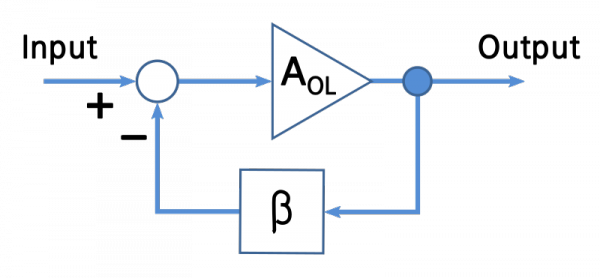
Harold Stephen Black (1898-1983)
On April 14, 1898, American electrical engineer Harold Stephen Black was born. Black discovered and developed the negative-feedback principle, in which amplification output is fed back into the input, thus producing nearly distortionless and steady amplification. His invention is considered the most important breakthrough of the twentieth century in the field of electronics, since it has a wide area of application.
“The answer scrawled on a blank page in a daily newspaper, was conceived whilst aboard a ferry.”
– Harold Stephen Black
Harold Stephen Black – Early Years
Harold Stephen Black was born in Leominster, Massachusetts, USA, in 1898. Black began experimenting with telecommunications systems in his youth and received a BSS in electrical engineering at Worcester Polytechnic Institute in 1921. Then, he joined Western Electric, the forerunner of Bell Telephone Laboratories, which was the manufacturing arm of AT&T. After undergoing the company’s training program, he joined the Systems Engineering Department, where his projects included carrier system design.[2] Several years later received an honorary doctorate in engineering from Worcester Tech. He joined Bell Labs in 1925, where he was a member of technical staff until his retirement in 1963.
The Trouble with Non-Linear Amplifiers
Amplifiers are unavoidably non-linear. Therefore, every time a signal is amplified in a telecommunications network, which can happen dozens of times in a circuit, noise and distortion are added. Black first invented the feed-forward amplifier which compares the input and output signals and then negatively amplifies the distortion and combines the two signals, canceling out some of the distortion. This amplifier design improved, but did not solve, the problems involved in transcontinental telecommunication.
The Negative Feedback Amplifier
After years of work Black invented the negative feedback amplifier which uses negative feedback to reduce the gain of a high-gain, non-linear amplifier and makes it act as a low-gain, linear amplifier with much lower noise and distortion. The Negative feedback amplifier allowed Bell system to reduce overcrowding of lines and extend its long-distance network by means of carrier telephony. It enabled the design of accurate fire-control systems in World War II, and it formed the basis of early operational amplifiers, as well as precise, variable-frequency audio oscillators.

Ideal negative feedback amplifier
Contrary to Established Beliefs
According to Black he got his inspiration to invent the negative feedback amplifier when he was traveling from New Jersey to New York City by taking a ferry to cross the Hudson River in August 1927. Having nothing to write on he sketched his thoughts on a misprinted page of the New York Times and then signed and dated it. At that time, Bell Laboratories headquarters were located in 463 West Street, Manhattan, New York City instead of New Jersey and he lived in New Jersey such that he took the ferry every morning to go to work. On August 8, 1928, Black submitted his invention to the U. S. Patent Office, which took more than nine years to issue the patent. Black later wrote: “One reason for the delay was that the concept was so contrary to established beliefs that the Patent Office initially did not believe it would work.“
Solving the Stability Problem
He published a classical paper “Stabilized feed-back amplifiers” on negative feedback amplifier in 1934, in which he mentioned Harry Nyquist‘s work on stability criterion because a negative feedback amplifier can be unstable and oscillate. Thus, with the help of Nyquist’s theory, he managed to demonstrate a stable negative feedback amplifier which can be used in reality. Negative feedback works by sacrificing gain for higher linearity (or in other words, smaller distortion/intermodulation). By sacrificing gain, it also has an additional effect of increasing the bandwidth of the amplifier. However, a negative feedback amplifier can be unstable such that it may oscillate. Once the stability problem is solved, the negative feedback amplifier is extremely useful in the field of electronics.
Modulation Theory
He also worked on pulse code modulation and wrote a book on “Modulation Theory” (1953). He held many patents the most famous of which was US Patent 2,102,671 “Wave Translation System“, which was issued to Bell Laboratories in 1937, covering the negative feedback amplifier. Similar work was carried out in Great Britain by Paul G. A. H. Voigt (British patent 231972) and in the Netherlands at Philips by Bernard Tellegen (British patent 323823) during the same period. It is therefore disputed who may be considered the first inventor of the negative feedback amplifier.
Black started writing his autobiography with the tentative title “Before the ferry docked“. However, he died in December 1983 at age 85 before he could finish it.
Curtis Meyer, Negative Feedback with Operational Amplifiers, [6]
References and Further Reading:
- [1] Harold Stephen Black, American Engineer, at Britannica Online
- [2] Oral-History:Harold S. Black, Engineering and Technology History Wiki
- [3] “Harold Stephen Black.” Science and Its Times: Understanding the Social Significance of Scientific Discovery. Encyclopedia.com
- [4] Harold Stephen Black at Wikidata
- [5] Harold S. Black Papers at WPI
- [6] Curtis Meyer, Negative Feedback with Operational Amplifiers, Professor Curtis Meyer @ youtube
- [7] H.S. Black, Stabilized feed-back amplifiers, Proc. IEEE, vol. 72, no. 6, pp. 716-722, June 1984.
- [8] C.A. Desoer, In memoriam: Harold Stephen Black, IEEE Transactions on Automatic Control, vol. AC-29, no. 8, pp. 673-674, Aug. 1984.
- [9] Timeline of Cyberneticists, via DBpedia and Wikidata





